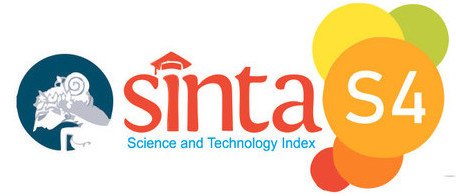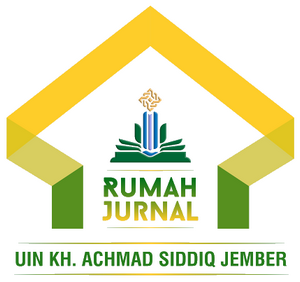Arabic Reading Learning Techniques for Children based on Ali Achmad Madzkur’s Perspective
DOI:
https://doi.org/10.35719/annisa.v15i1.81Arabic is one of the official languages of the United Nations, which is essential for all nations to have as a means of global communication between countries. In a country with a majority Muslim population like Indonesia, apart from being a means of communication, Arabic has a special place as a medium for worship and deepening knowledge of the Islamic religion. Mastering Arabic is necessary for all Muslims, young and old, even children. Non-Arabic speakers cannot automatically master Arabic because it is not their mother tongue; therefore, specific techniques to learn it, especially in reading skills. This study aims to describe comprehensively the technique of learning to read Arabic from the perspective of Ali Achmad Madzkur. The researcher uses a qualitative approach with descriptive methods in this type of literature research. The study results stated that the techniques of learning to read Arabic for children from the perspective of Ali Achmad Madzkur include; listening and speaking techniques, reading aloud techniques, analysis techniques, letter identification techniques, and composing techniques.
References
Abd. Rahman, Anwar. "Reading Skills and Development Techniques in Learning Arabic". Jurnal Diwan 3, عدد 2 (2017). https://doi.org/https://doi.org/10.24252/diwan.v3i2.4602.
Ahmad Warson Munawwir. Al-Munawwir:Kamus Arab-Indonesia. Surabaya: Pustaka Progresif, 1997.
Aprizal, Ambo Pera. "Urgensi Pembelajaran Bahasa Arab dalam Pendidikan Islam". Jurnal Pendidikan Guru 2, عدد 2 (2021): 87. https://doi.org/https://doi.org/10.47783/jurpendigu.v2i2.232.
Chairilsyah, Daviq. "Methods and Techniques Teaching Culture of Queuing to Early Children". Jurnal Educhild : Pendidikan dan Sosial 4, عدد 2 (2015): 80. https://doi.org/http://dx.doi.org/10.33578/jpsbe.v4i2.3379.
Fahrurrozi, Aziz. "Arabic Learning: Problems and Solutions". Arabiyat : Jurnal Pendidikan Bahasa Arab dan Kebahasaaraban 1, عدد 2 (2014). https://doi.org/10.15408/a.v1i2.1137.
Gala, Syaiful. Konsep dan Makna Pembelajaran. Bandung: Alfabeta, 2005.
Harianto, Erwin. "Reading Skills in Language Learning". Jurnal Didaktika 9, عدد 1 (2020). https://jurnaldidaktika.org/.
Izzan, Ahmad. Metodologi Pembelajaran Bahasa Arab. Cet. I. Bandung: Humaniora, 2004.
Madzkur, Ali Ahmad. Thuruq Tadris al-Lughah al-‘arabiyah. Oman: Dar al-MUyassaroh, د.ت.
Mahmud Faraj Abd Hafizh dkk. Muzakkirat al-Dirasah al-Tarbawiyah. t.c: t.tp, د.ت.
Pane, Akhiril. "Urgensi Bahasa Arab; Bahasa Arab sebagai Alat Komunikasi Agama Islam". KOMUNIKOLOGI: Jurnal Pengembangan Ilmu Komunikasi dan Sosial 2, عدد 1 (2018): 78. https://doi.org/http://dx.doi.org/10.30829/komunikologi.v2i1.5452.
Putri, Wakhidati Nurrohmah. "Pengaruh Media Pembelajaran Terhadap Motivasi Belajar Bahasa Arab Siswa Madrasah Tsanawiyah". Lisania: Journal of Arabic Education and Literature 1, عدد 1 (2017): 2. https://doi.org/https://doi.org/10.18326/lisania.v1i1.1-16.
Sa’adah, Nailis. "Problematika Pembelajaran Nahwu bagi Tingkat Pemula Menggunakan Arab Pegon". Lisanan Arabiya : Jurnal Pendidikan Bahasa Arab 3, عدد 1 (2019): 15. https://doi.org/10.32699/liar.v3i01.995.
Saputra, Moh. Alfian Hadist. "Desain Pembelajaran Membaca Kitab Kuning Model Dick and Carey di Madrasah Diniyyah Daruttaqwa Gresik". ATTAQWA : Jurnal Ilmu Pendidikan Islam 16, عدد 1 (2020): 32. https://doi.org/https://doi.org/10.54069/attaqwa.v16i1.26.
Shofiyani, Amrini, Nafingah Nafingah. "Pengembangan Buku Ajar Nahwu Berbasis Thariqoh Ma’rifiyah di Madrasah Diniyah Darul Muttaqin Jombang". JoEMS (Journal of Education and Management Studies) 4, عدد 5 (2021): 45. http://ojs.unwaha.ac.id/index.php/joems/article/view/566.
Sugiyono. Metode Penelitian Kuantitatif, Kualitatif, dan R&D. Bandung: CV Alfabeta, 2013.
Tarigan, Henry Guntur. Membaca ; Sebagai Suatu Keterampilan Berbahasa. Ed, Revisi. Bandung: Angkasa Bandung, 2008.
على أحمد مدكور. "السيرة الذاتية لـ أ. د/ على أحمد مدكور", 2017. https://search.mandumah.com/Record/822189.
Downloads
Published
Issue
Section
License
Copyright (c) 2022 Asep Maulana

This work is licensed under a Creative Commons Attribution-NonCommercial 4.0 International License.
















 AN-NISA licensed under Creative Commons Attribution-NonCommercial 4.0 International License.
AN-NISA licensed under Creative Commons Attribution-NonCommercial 4.0 International License.